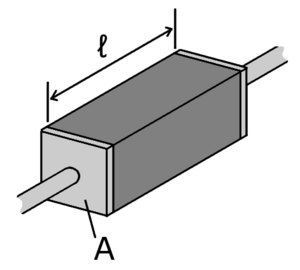Electrical resistivity facts for kids
Electrical resistivity is a cool idea in the world of electricity. It tells us how much a material tries to stop electricity from flowing through it. Think of it like a narrow, bumpy road for cars. Some materials, like metals, are like super smooth, wide highways for electricity. They have very low resistivity. Other materials, like rubber, are like a dead end – electricity can barely get through them. They have high resistivity.
Contents
What is Electrical Resistivity?
Electrical resistivity is a way to measure how much a material resists the flow of an electric current. Every material has a different amount of resistivity. If a material has high resistivity, it means it's tough for electricity to pass through it. If it has low resistivity, electricity can flow easily.
How Materials Resist Electricity
Imagine electricity as tiny runners trying to get through a material. Electrical resistivity measures how hard it is for these runners to move. Materials that are good at stopping electricity have high resistivity. Materials that let electricity pass easily have low resistivity.
Measuring Resistivity
Scientists use a special unit called the ohm metre (written as Ω·m) to measure electrical resistivity. This unit helps us compare how different materials stop electricity. A lower number means electricity flows better through that material.
Conductors, Insulators, and Semiconductors
- Conductors: These materials have very low resistivity. They let electricity flow through them easily. Most metals, like copper and silver, are great conductors. That's why wires are often made of copper!
- Insulators: These materials have very high resistivity. They are designed to stop electricity from flowing. Things like rubber, plastic, and glass are good insulators. They help keep us safe from electric shocks.
- Semiconductors: These are special materials that are somewhere in between conductors and insulators. Their resistivity can change under different conditions. This makes them super useful in electronics, like in your phone or computer chips. Silicon is a common semiconductor.
Resistivity vs. Conductivity
Electrical resistivity and electrical conductivity are opposites. If a material has high resistivity, it means it has low conductivity. If it has low resistivity, it has high conductivity. For example, metals have low resistivity (and high conductivity), while rubber has high resistivity (and low conductivity). This idea is especially important when we talk about semiconductors and insulators.
Images for kids
-
Lightning is an example of plasma, which is a super hot, electrically charged gas. Lightning can carry huge amounts of electricity, showing how materials can conduct under extreme conditions.
See also
 In Spanish: Resistividad para niños
In Spanish: Resistividad para niños




